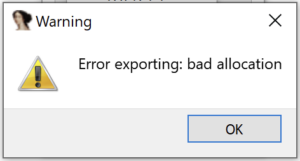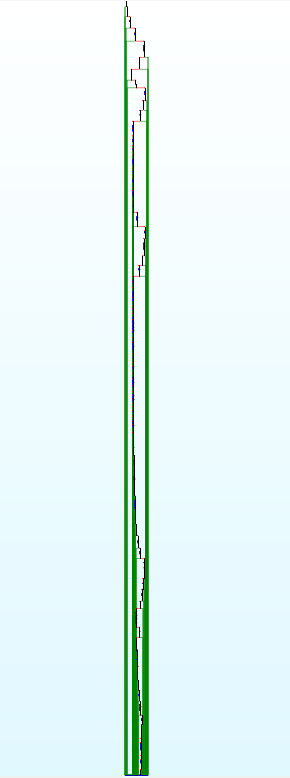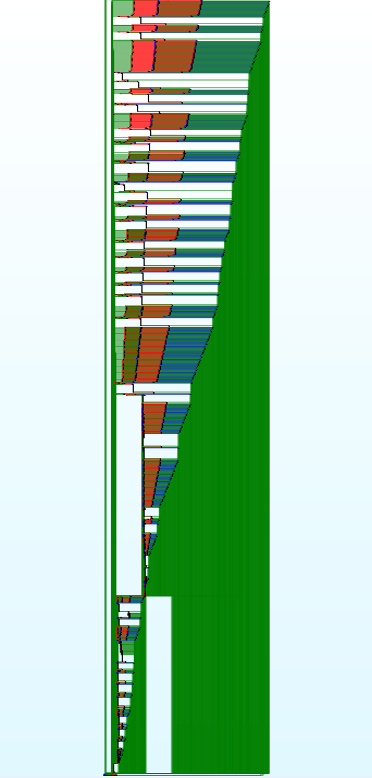Malware analysis is part of the CTI team’s daily routine. This article presents the analysis of a Rust strain of Buer Loader from the reception of the samples to the writing of a stage2* extraction script. Despite several protection mechanisms, it was possible to extract all the samples in different ways. TEHTRIS provides the code for such an extraction.
Introduction
The Rust language [1] is more and more used [2] by developers. Indeed, the philosophy of this language is to maximize security while offering performances close to C++ in a pleasant syntax. Many ambitious projects like Kerla [3] aim at offering an operating system that is compatible with any Linux binary, without modification. This gives Rust a lot of credibility and explains its adoption by developers. From a low-level point of view, this language generates a more complex binary code to sign and analyze compared to C by offering more instructions and adding obfuscation at low cost, which is of interest to malware authors.
If still few adopt it, it is however not surprising to note that this language is starting to make a name for itself in the malware bestiary, as shown by Buer Loader [3] which includes variants developed in this language.
If this malware program has already been analyzed [3], it remains interesting to study its “stage1*” to identify the protection mechanisms and the evolutions concerning its obfuscation over time. Indeed, sandbox bypass techniques [5] and memory loading of offended binaries [6] by an unknown mechanism have been observed. This was enough to trigger the interest of a retro-analysis of the loader in question.
The goal is to characterize and extract the main load of the malware that was specifically spotted in computing environments between July and August 2021.
An emulation-based extraction method was presented at the Hack-It-N conference in December 2021. A replay of the presentation is available on Youtube [16].
Analysis
The retrieved samples work on the same model, i.e. a base in Rust loading in memory a stage2, itself written in Rust. Here is the list of these samples:
| Sha256 | Compile time | Size |
| 001405ded84e227092bafe165117888d423719d7d75554025ec410d1d6558925 | 2021-07-28 17:59:19 | 3.4 MB |
| 4421dbc01ddc5ed959419fe2a3a0f1c7b48f92b880273b481eb249cd17d59b91 | 2021-08-11 15:35:55 | 6.6 MB |
| 52d8316b0765c147558aecbda686d076783f3a08b2741b8c9e3e717cc56e8a92 | 2021-07-19 13:57:22 | 7.3 MB |
| 580d55f1e51465b697d46e67561f3161d4534a73e8aa47e18b9bae344d46bcf4 | 2021-07-19 13:57:22 | 7.3 MB |
| 578dc62dfa0203080da262676f28c679114d6b1c90a4ab6c07b736d9ce64e43e | 2021-07-15 16:28:54 | 7.1 MB |
| 5ac6766680c8c06a4b0b4e6a929ec4f5404fca75aa774f3eb986f81b1b30622b | 2021-08-05 14:47:25 | 4.9 MB |
| 64dd547546394e1d431a25a671892c7aca9cf57ed0733a7435028792ad42f4a7 | 2021-08-16 18:54:29 | 4.1 MB |
| 88689636f4b2287701b63f42c12e7e2387bf4c3ecc45eeb8a61ea707126bad9b | 2021-08-03 15:46:42 | 3.3 MB |
| afb5cbe324865253c7a9dcadbe66c66746ea360f0cd184a2f4e1bbf104533ccd | 2021-06-25 17:49:48 | 7.1 MB |
| c425264f34fa8574c7e4321020eb374b9364a094cda9647e557b97d5e2b8c17b | 2021-08-16 18:54:29 | 4.1 MB |
| d3a486d3b032834b1203adefd25d0bf0b36fae7f9e72071c21ccc266e1e1f893 | 2021-07-19 14:14:54 | 4.3 MB |
The compilation dates seem consistent with each other. Indeed, they match approximately the submission dates on Virus Total [15] (with a small delay). The binaries are stripped (i.e. symbols unnecessary for the binary to work have been removed, especially function names and debugging symbols) but still contain information about the used source code:

Unfortunately, BinDiff [7] is not able to compare binaries. The control flow is too complex for it. Therefore, the code comparisons were done manually by our experts.

Our analysis determined that there seem to be only 2 source files outside of the open source (mainly cryptographic) libraries used. A first anti-sandbox technique consists in wasting time by performing an unnecessary loop. The order of magnitude of the time needed (and lost) is about one minute with a 100% occupied CPU.

After passing through this loop, we arrive at the decryption function of stage2. This one contains a large number of successive calls to useless functions, among which we find:
- GetCommandLineA;
- GetCurrentProcess;
- GetEnvironmentStrings;
- GetLastError;
- GetProcessHeap;
- GetTickCount;
It is probably a saturation mechanism using calls (call to a Windows library) and not taking any argument to override possible sandboxes, which complicates code emulation. It seems that a script generates all the calls. This technique also has the advantage of adding a credible call/instruction ratio compared to a legitimate program. Counting the calls sometimes allows to find decryption or unpacking routines:




These calls are repeated throughout the desobfuscation routine. The data are successively pushed on the stack, then in the heap with the help of kernel32 !HeapAlloc, in the form of DWORD:

The call graph is very different across samples, reinforcing our hypothesis that the code is generated from a script. The mix of calls and desobfuscation involves a special effort to blend in a behavior that appears to be legitimate.



This technique allows to include binary data by limiting the entropy between 0.5 and 0.8, very close to what one would expect from legitimate instructions.

This data, once reconstituted, is placed in a buffer which is decrypted. We then recognize a Key Schedule type mechanism, followed by a generator reminiscent of RC4:


The Rust paradigm makes these decryption routines difficult to identify. Tools such as findcrypt [8] do not detect them. The following check identifies the entire desobfuscation chain:

The decompression is performed by the version 0.1.3 of the lzma-rs library [9], and the decryption keys are easily visible in the code. The following script allows its extraction:

The list of RC4 keys for the samples is as follows:
- YDVHHCYTCH ;
- DQOQHMLGYU ;
- BWSCVQZXOB ;
- SIMHIDVSCR ;
- RGZPMAAQRP ;
- YVMOOVSIOF ;
- KSQKGUUTXZ ;
- EUWPUQYDTT ;
- KHBXNNHKNN ;
Unfortunately, the number of keys is insufficient to evaluate the quality of the PRNG [10]. Note that the charset is very small, which does not matter since the key is in plain text in the “.rdata” section. Given the extremely variable and complex call graph, writing a generic data extraction script that works for all samples is tedious. Now that we know the key (cf. previous extraction script), we need to find the encrypted data. These, once desobfuscated, have a header with invariant data:

The following script then allows to find the extracted data in memory, provided that the program has performed the decryption phase by carrying out an Egg-hunting search:

The only thing missing to automate the extraction is to find an address or to set a breakpoint, which is done in a fairly logical way by finding the references to the RC4 key:

And the script works on the first try for all samples. The source code of the tool is available on the TEHTRIS github [19].
An alternative method was presented at the Hack-it-N conference [16]. It consists in extracting the stage2 by emulation using the unicorn lib [17]. The source code is available on the TEHTRIS github [18].
The extraction of stage2 from the studied samples gives the following list:
| Sha256 | Stage1 compile time | Stage 2
compile time |
| edc3b5f8d45d7a1cceee144e57fc5ddfaf8c0c7407a1514d2f3bab4f3c9f18b8 | 2021-07-28 17:59:19 | 2021-07-28 17:39:31 |
| d7ec38c0e89a749a7727e5644328835b50e19302e9f3a4688809403ebcbd03d2 | 2021-08-11 15:35:55 | 2021-08-11 15:30:38 |
| 6578db32dc78ef7f41213557cf894d03b97ed6974ae7a72bec9b7c7ac08c4ba9 | 2021-07-19 13:57:22 | 2021-07-19 13:44:11 |
| d48d91451b9594eadc0d1ef6e379bbce9a6033bd337e06d46613a70187c9c5ef | 2021-07-15 16:28:54 | 2021-07-15 16:20:18 |
| 54109b12cbbd223f5ad79a9f87bfe50ef05a80e5551a3c1931748c3698900496 | 2021-08-05 14:47:25 | 2021-08-05 14:38:43 |
| 2d8a2bcc45daedd343eadb4222885d12a221bebbf7f1d98f92cb233df0a4c1d4 | 2021-08-16 18:54:29 | 2021-08-16 18:45:22 |
| 16feaed6222ce4a1941ae0c32eabaf0ecf68c33c49544f71d431d1b70c4247fd | 2021-08-03 15:46:42 | 2021-08-03 15:38:18 |
| 7af554fb260817350d33b801d9f0b8a638b831992f4b1b31c2bbdab875b211df | 2021-06-25 17:49:48 | 2021-06-25 17:43:23 |
| 2d8a2bcc45daedd343eadb4222885d12a221bebbf7f1d98f92cb233df0a4c1d4 | 2021-08-16 18:54:29 | 2021-08-16 18:45:22 |
| 039d63a07372e6e17f9779ccffbafbf9a06a9402ade58fbec3b0b2f8d2038175 | 2021-07-19 13:57:22 | 2021-07-19 13:46:46 |
The timestamps seem coherent between themselves and we note that the compilation dates correspond with a gap of 5 to 10 minutes, suggesting a manual packing step.
We note that stage2 verifies the presence of a virtual machine by testing the presence of the following executables:
> vboxservice.exe ;
> vboxtray.exe ;
> vmtoolsd.exe ;
> vmwaretray.exe ;
> vmwareuser.exe ;
> vmacthlp.exe ;
> vmsrvc.exe ;
> vmusrvc.exe ;
> prl_cc.exe ;
> prl_tools.exe ;
> xenservice.exe ;
> qemu-ga.exe ;
> windanr.exe.
Once the desobfuscation step is done, the binary is no longer obfuscated and easily delivers its secrets. For example C2 [11]:

Or encrypts list of files constituting the source code:

The analysis of the stage2 has already been done, however, and we will not describe it here.
Conclusion
Evading automated malware detection systems is a balancing act between binary entropy, hiding encryption functions, slowing down the analysis time, obtaining a consistent call/instruction ratio…
The use of Rust adds a machine code overlay which is however much less than what a Go [12], delphi [13], cython [14], etc. compiler would do, making a manual analysis quite reasonable.
However, these techniques are no match for a reverser or a well-configured sandbox. The manual analysis of the most known and least traceable threats is a plus in the continuous improvement of our sandbox and EDR products. It is very likely that in the future, more and more malware programs will be developed in Rust.
* The use of stageN consists in separating the malware program into several specialized sub-parts in order to escape antivirus detection. In this case, stage1 is the malware program as sent to victims and stage2 is the payload encapsulated in stage1.
BIBLIOGRAPHY
[1] https://www.rust-lang.org/
[2] https://www.tiobe.com/tiobe-index/rust/
[3] https://github.com/nuta/kerla
[4] https://www.proofpoint.com/us/blog/threat-insight/new-variant-buer-loader-written-rust
[5] https://fr.wikipedia.org/wiki/Sandbox_(s%C3%A9curit%C3%A9_informatique)
[6] https://fr.wikipedia.org/wiki/Offuscation
[7] https://www.zynamics.com/bindiff.html
[8] https://github.com/you0708/ida/tree/master/idapython_tools/findcrypt
[9] https://github.com/gendx/lzma-rs
[10] https://fr.wikipedia.org/wiki/G%C3%A9n%C3%A9rateur_de_nombres_pseudo-al%C3%A9atoires
[11] https://www.trendmicro.com/vinfo/us/security/definition/command-and-control-server
[12] https://golang.org/
[13] https://www.embarcadero.com/fr/products/delphi
[14] https://cython.org/
[15] https://www.virustotal.com
[16] https://www.youtube.com/watch?v=4Lux_0IROMY
[17] https://www.unicorn-engine.org/
[18] https://github.com/tehtris-hub/MalwareTool/blob/main/Buer/extract_buer.py
[19] https://github.com/tehtris-hub/MalwareTool/blob/main/Buer/extract_buer_debug.py

